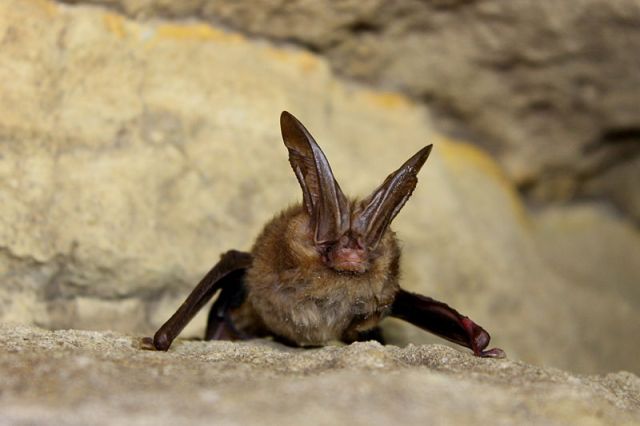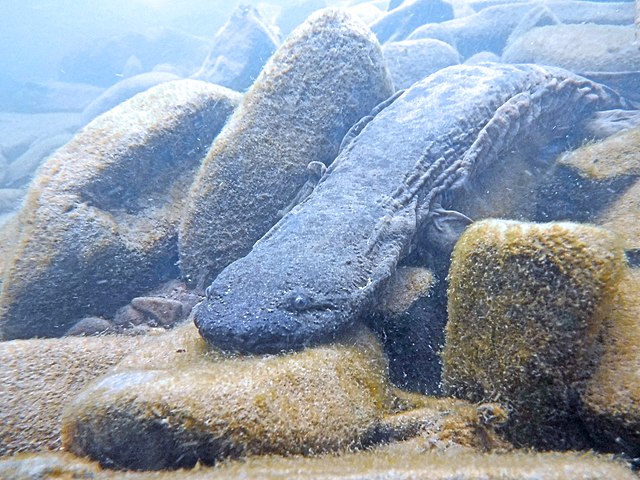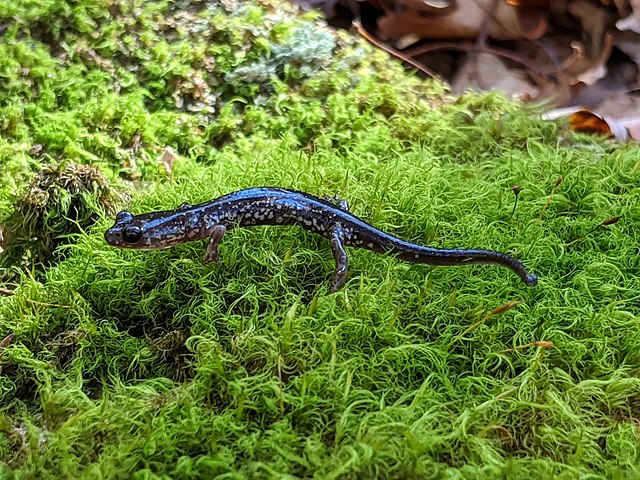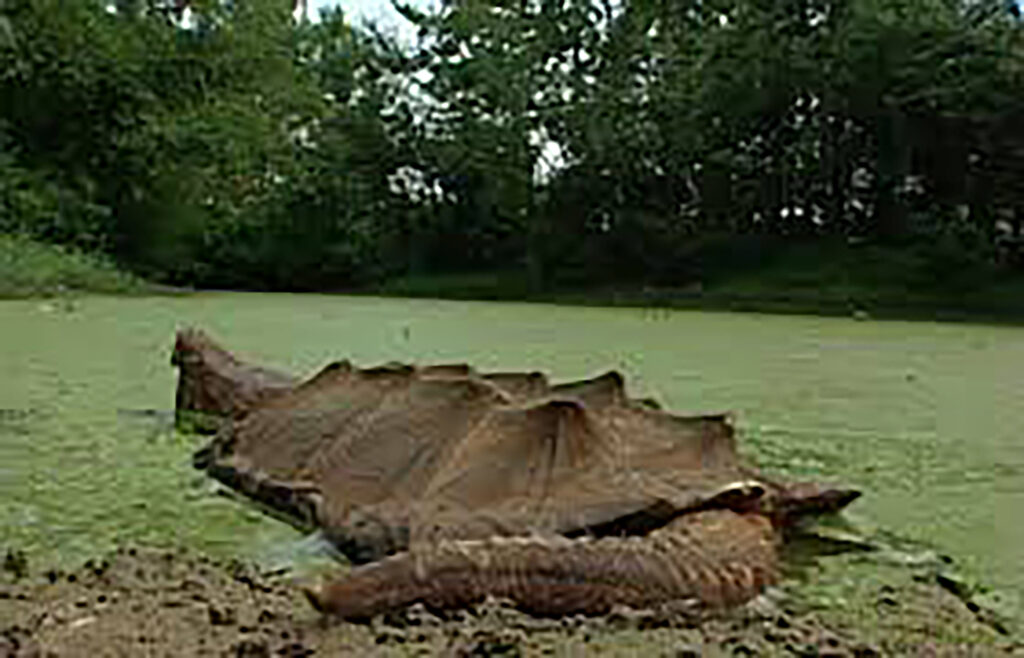
Alright, picture this: you’re trekking through the dense forests of West Virginia, and suddenly, you come face to face with a creature straight out of a Sci-Fi movie. You blink, thinking maybe your eyes are playing tricks on you. But no, it’s real. West Virginia is home to some of the most bizarre and peculiar creatures you’ll ever encounter. From the legendary Mothman to the elusive Snallygaster, these strange animals will leave you both fascinated and slightly spooked. So, if you’ve got an adventurous spirit and a craving for the weird and wonderful, get ready to explore the world of “Strange Animals in West Virginia.”

Hellbender Salamander
Physical Characteristics
The Hellbender Salamander, also known as the Eastern Hellbender, is a unique and fascinating creature found in West Virginia. One of its most striking physical characteristics is its size – it can grow up to two feet in length, making it one of the largest salamanders in the world. Its flat body, wrinkled skin, and slimy texture give it a distinct appearance. You’ll also notice that it has four toes on its front feet, unlike most salamanders, which have five.
Habitat and Diet
Hellbenders are primarily aquatic creatures, preferring to inhabit clean, cold mountain streams and rivers. They can be found hiding under rocks or logs during the day, only emerging at night to hunt for food. Speaking of food, Hellbenders have quite an interesting diet. They primarily feed on crayfish, but they also consume other small aquatic creatures such as fish, worms, and tadpoles. Their large size allows them to devour prey that would be impossible for other salamanders to consume.
Interesting Facts
Did you know that hellbenders are not only fascinating but also incredibly important for their ecosystems? They serve as indicators of water health, as they are highly sensitive to changes in water quality. If a population of Hellbenders is thriving, it’s a good sign that the surrounding environment is healthy too. Another interesting fact about Hellbenders is their ability to breathe through their skin. This amazing adaptation allows them to extract oxygen from the water, helping them survive in their underwater habitats.
Northern Flying Squirrel
Physical Attributes
In the forests of West Virginia, you may encounter the Northern Flying Squirrel, an adorable and elusive creature. These small rodents are known for their unique adaptation – a membrane of skin, called a patagium, stretching from their wrists to their ankles, allowing them to glide through the air. They have large and expressive eyes, which give them an endearing appearance.
Lifestyle and Diet
Northern Flying Squirrels are primarily nocturnal, using their gliding ability to move effortlessly through the forest canopy at night. They are highly social animals and live in family groups. Their diet mainly consists of nuts, seeds, berries, and fungi, but they are also known to supplement their meals with insects and bird eggs.
Notable Features
One notable feature of the Northern Flying Squirrel is its ability to communicate using a series of vocalizations and scent markings. These techniques help them establish and defend their territories. Additionally, their large eyes are extremely sensitive to light, allowing them to navigate through the dark forest with ease.
Eastern Box Turtle
General Description
The Eastern Box Turtle is a beloved reptile found in the woodlands and meadows of West Virginia. It is characterized by its dome-shaped shell, which can vary in color from dark brown to orange or yellow. Additionally, these turtles have distinct markings on their shells, often resembling intricate patterns or blotches.
Habitat and Behavior
Eastern Box Turtles prefer habitats with a mix of open areas and thick vegetation. They are solitary creatures and can often be found hiding under fallen leaves or burrowing in the ground to escape extreme temperatures or predators. These turtles have an interesting behavior known as estivation, where they enter a dormant state during periods of hot and dry weather.
Unusual Traits
One peculiar trait of the Eastern Box Turtle is its ability to retract its head, limbs, and tail completely into its shell for protection. Unlike other turtles, these ones have a hinged plastron, allowing them to close their shell tightly. Another fascinating fact about Eastern Box Turtles is their incredible lifespan. They can live for over 50 years in the wild, making them one of the longest-living turtles in North America.
Virginia Big-Eared Bat
Physical Details
The Virginia Big-Eared Bat is a unique and striking mammal found in the caves and forests of West Virginia. True to its name, this bat possesses exceptionally large ears compared to other bat species. Its ears can measure up to one-third of its body length. These bats also have short fur, which ranges from light brown to grayish in color.
Lifestyle and Habits
Virginia Big-Eared Bats are highly social and form maternity colonies during the summer months. These colonies consist of females and their young, while adult males tend to live in smaller bachelor colonies. These bats feed primarily on moths, flying insects, and beetles, which they catch on the wing using echolocation.
Unique Features
One distinctive feature of the Virginia Big-Eared Bat is its diet specialization. It has evolved to become an expert in catching and consuming moths, particularly those that are toxic to other predatory animals. The large ears of these bats are crucial for their survival, as their heightened sensitivity to sound aids in detecting prey and navigating through their dark habitats.

American Woodcock
Species Description
The American Woodcock, often referred to as the “Timberdoodle,” is an intriguing bird species that can be found in the grasslands and young forests of West Virginia. With its plump body and long, slender bill, this bird has a unique appearance. Its overall plumage is a mix of reddish-brown, gray, and black, which helps them blend into their woodland habitats.
Habitats and Behavior
American Woodcocks are primarily nocturnal and can often be seen displaying an unusual courtship behavior known as the “sky dance.” Males perform elaborate aerial displays, flying up into the air and making a series of buzzing and twittering sounds with their wings. These displays are accompanied by a distinctive peenting call, which echoes through the woodlands.
Intriguing Facts
One fascinating fact about American Woodcocks is their incredible ability to camouflage themselves. Their mottled plumage and stillness on the forest floor make them nearly invisible, providing protection from potential predators. Another interesting aspect of their behavior is their unique bill. The American Woodcock’s bill contains sensory receptors that help them locate earthworms, which make up a significant portion of their diet.
Eastern Spadefoot Toad
Species Information
The Eastern Spadefoot Toad, commonly found in the eastern part of West Virginia, is an interesting amphibian with several notable features. Its body can vary in color from gray to brown, with a rough, warty texture. However, one distinct trait sets it apart from other toads – a spade-like structure on its hind feet, giving it its name.
Habitat and Lifestyle
Eastern Spadefoot Toads prefer sandy or loamy soils, as they require loose substrate for breeding. They spend the majority of their lives underground, emerging only during warm, wet weather conditions or when it’s time to find a mate. These toads have fascinating breeding habits, as they rely on temporary rain-filled pools called vernal pools, which appear during heavy rainfalls, to lay their eggs.
Noteworthy Aspects
One noteworthy aspect of the Eastern Spadefoot Toad is its ability to burrow into the ground using its powerful hind legs and spade-like feet. This behavior allows them to escape from predators, as well as withstand periods of drought by burrowing deeper into the soil. Furthermore, these toads have a peculiar breeding call that sounds like a high-pitched “waaaah,” which can be heard during the spring and summer nights.

Green Salamander
Species Profile
The Green Salamander, a small and secretive amphibian, can be found in the rocky cliffs and boulders of West Virginia. Its name perfectly describes its vibrant green coloration, which helps it blend into the moss and lichens that cover its preferred habitats. These salamanders have a slender body, with short limbs and a long tail.
Habitat and Lifestyle
Green Salamanders have specific habitat requirements and are generally limited to areas with cool and moist rock outcrops. They prefer to hide in crevices or under rocks during the day, only coming out at night to hunt for small invertebrates such as spiders, insects, and snails. The rocky terrain where they reside provides both protection and a reliable food source.
Distinct Features
One distinct feature of the Green Salamander is its incredible sticky toes, which allow it to cling to vertical or even upside-down surfaces. This remarkable adaptation enables them to navigate the rocky environment with ease and hunt in areas where other predators cannot reach. Additionally, Green Salamanders have a long lifespan compared to other salamander species, with some individuals living up to 20 years in the wild.
Cave Salamander
General Information
The Cave Salamander, as the name suggests, is a fascinating amphibian that dwells in the dark caves and caverns of West Virginia. These salamanders have a unique appearance, with pale skin and pinkish hues. Their bodies are elongated and slender, allowing them to maneuver through narrow cave passages.
Habitats and Behavior
Cave Salamanders are entirely adapted to their cave habitats and are rarely encountered outside of these environments. They prefer cool, humid caverns with ample access to water sources. Due to their cave-dwelling nature, they have poor eyesight and rely heavily on their sense of smell and touch to navigate and locate prey. These salamanders hunt for insects, spiders, and other small invertebrates in the dark recesses of the caves.
Remarkable Properties
One remarkable characteristic of Cave Salamanders is their ability to survive in extreme low-light and low-nutrient conditions. They possess a heightened sense of chemoreception, allowing them to detect prey and navigate their pitch-black surroundings. Additionally, these salamanders have the ability to regenerate lost body parts, including their limbs and even their spinal cords, making them extraordinary in the world of amphibians.

Timber Rattlesnake
Physical Description
The Timber Rattlesnake, also known as the Canebrake Rattlesnake, is a venomous snake species that can be found in the forests and woodlands of West Virginia. With their striking patterns and menacing reputation, these snakes are both feared and respected. They have a relatively thick body and can grow up to five feet in length. Their most distinctive feature, of course, is their rattle, located at the end of their tail.
Habitat and Lifestyle
Timber Rattlesnakes prefer habitats with a mix of rocky outcrops, forests, and open grasslands. They are mostly active during the warmer months and, like many reptiles, are ectothermic, meaning they rely on external sources of heat to regulate their body temperature. During colder periods, they hibernate in secluded dens or crevices to escape the freezing temperatures.
Intriguing Facts
One intriguing fact about Timber Rattlesnakes is their ability to control and modify the intensity of their rattling sound. The intensity can range from a gentle warning to an aggressive and buzzing noise, depending on the perceived threat. Another interesting aspect of their behavior is their ability to give live birth rather than laying eggs, making them one of the few snake species with this reproductive strategy.
As you explore the diverse landscapes of West Virginia, keep an eye out for these strange and fascinating creatures. From the elusive Northern Flying Squirrel to the ancient Eastern Hellbender, each of these animals contributes to the unique ecosystems found in the beautiful state. Take the time to appreciate the physical characteristics, habitats, and intriguing facts of these remarkable creatures – they truly are wonders of the natural world.






